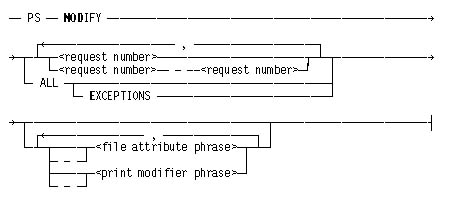The following examples show five railroad diagrams and possible command and statement constructions based on the paths of these diagrams.
Example 1
<lock statement>

|
Sample Input |
Explanation |
|---|---|
|
LOCK (FILE4) |
LOCK is a constant and cannot be altered. Because no part of the word appears in boldface, the entire word must be entered. The parentheses are required punctuation, and FILE4 is a sample file identifier. |
Example 2
<open statement>

|
Sample Input |
Explanation |
|---|---|
|
OPEN DATABASE1 |
The constant OPEN is followed by the variable DATABASE1, which is a database name. The railroad diagram shows two user-selected items, INQUIRY and UPDATE. However, because an empty path (solid line) is included, these entries are not required. |
|
OPEN INQUIRY DATABASE1 |
The constant OPEN is followed by the user-selected constant INQUIRY and the variable DATABASE1. |
|
OPEN UPDATE DATABASE1 |
The constant OPEN is followed by the user-selected constant UPDATE and the variable DATABASE1. |
Example 3
<generate statement>

|
Sample Input |
Explanation |
|---|---|
|
GENERATE Z = NULL |
The GENERATE constant is followed by the variable Z, an equal sign (=), and the user-selected constant NULL. |
|
GENERATE Z = X |
The GENERATE constant is followed by the variable Z, an equal sign, and the user-selected variable X. |
|
GENERATE Z = X AND B |
The GENERATE constant is followed by the variable Z, an equal sign, the user-selected variable X, the AND command (from the list of user-selected items in the nested path), and a third variable, B. |
|
GENERATE Z = X + B |
The GENERATE constant is followed by the variable Z, an equal sign, the user-selected variable X, the plus sign (from the list of user-selected items in the nested path), and a third variable, B. |
Example 4
<entity reference declaration>

|
Sample Input |
Explanation |
|---|---|
|
ENTITY REFERENCE ADVISOR1 (INSTRUCTOR) |
The required item ENTITY REFERENCE is followed by the variable ADVISOR1 and the variable INSTRUCTOR. The parentheses are required. |
|
ENTITY REFERENCE ADVISOR1 (INSTRUCTOR), ADVISOR2 (ASST_INSTRUCTOR) |
Because the diagram contains a loop, the pair of variables can be repeated any number of times. |
Example 5
<PS MODIFY command>

|
Sample Input |
Explanation |
|---|---|
|
PS MODIFY 11159 |
The constants PS and MODIFY are followed by the variable 11159, which is a request number. |
|
PS MODIFY 11159,11160,11163 |
Because the diagram contains a loop, the variable 11159 can be followed by a comma, the variable 11160, another comma, and the final variable 11163. |
|
PS MOD 11159-11161 DESTINATION = "LP7" |
The constants PS and MODIFY are followed by the user-selected variables 11159-11161, which are request numbers, and the user-selected variable DESTINATION = "LP7", which is a file attribute phrase. Note that the constant MODIFY has been abbreviated to its minimum allowable form. |
|
PS MOD ALL EXCEPTIONS |
The constants PS and MODIFY are followed by the user-selected constants ALL and EXCEPTIONS. |

